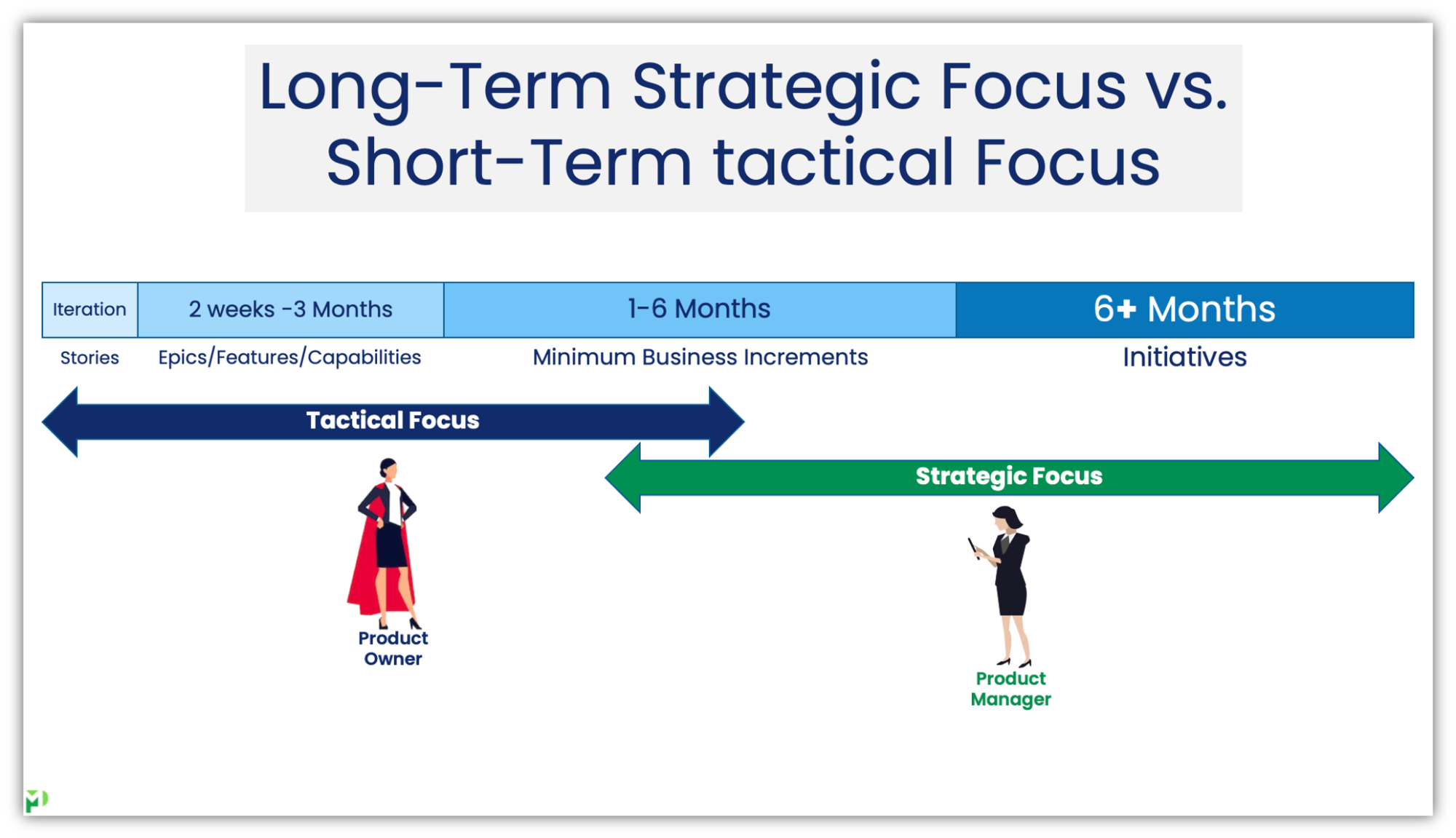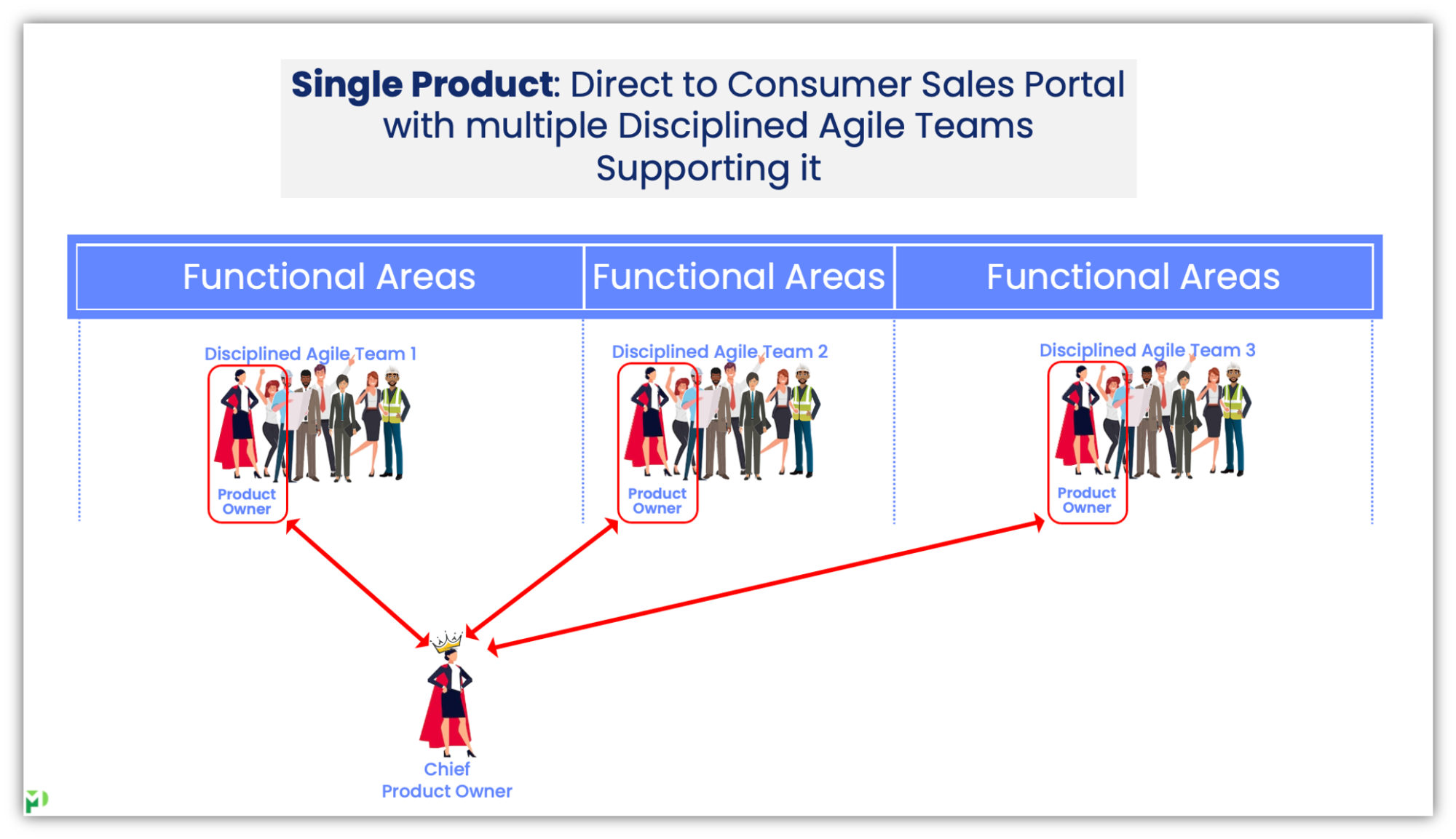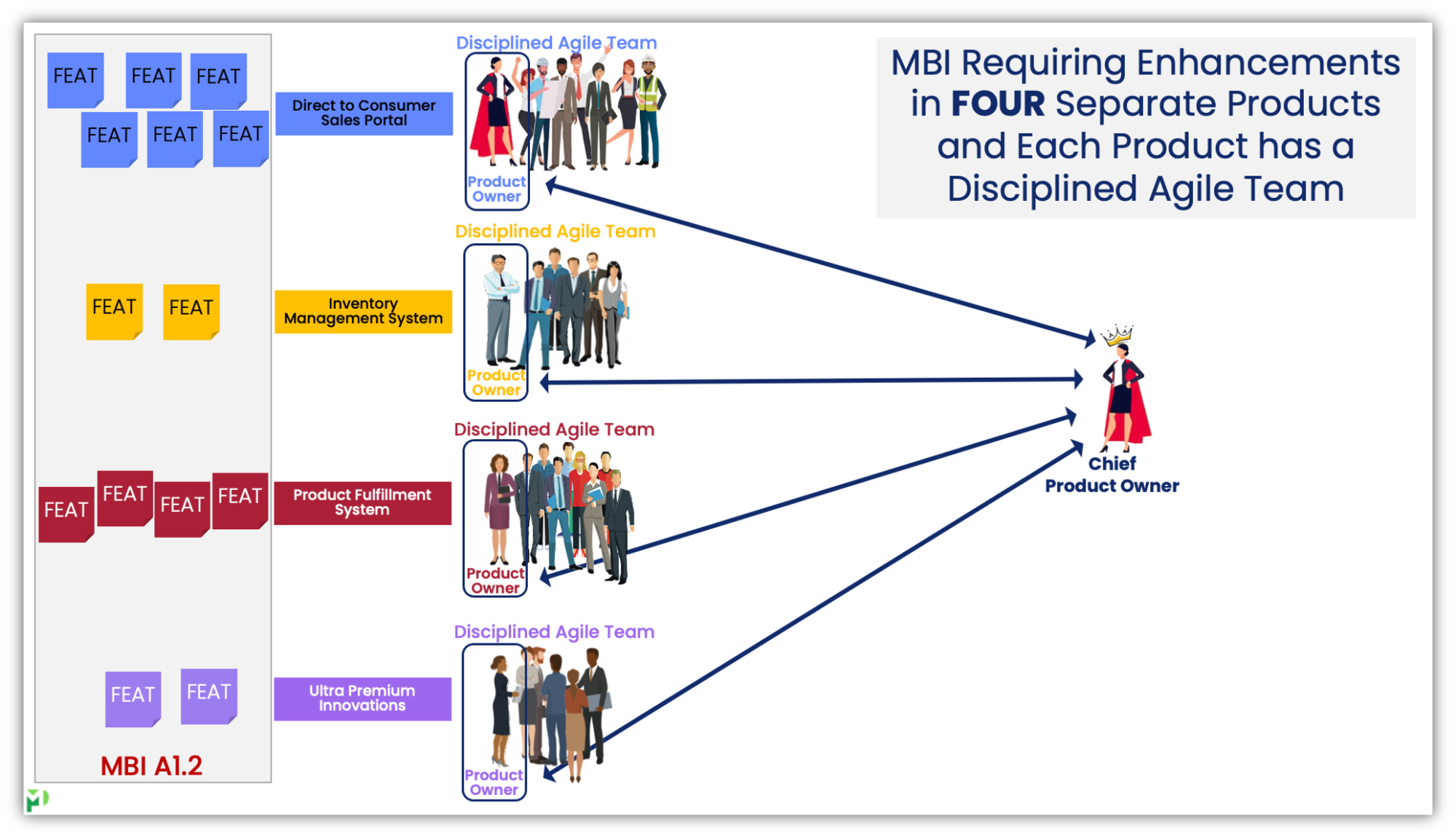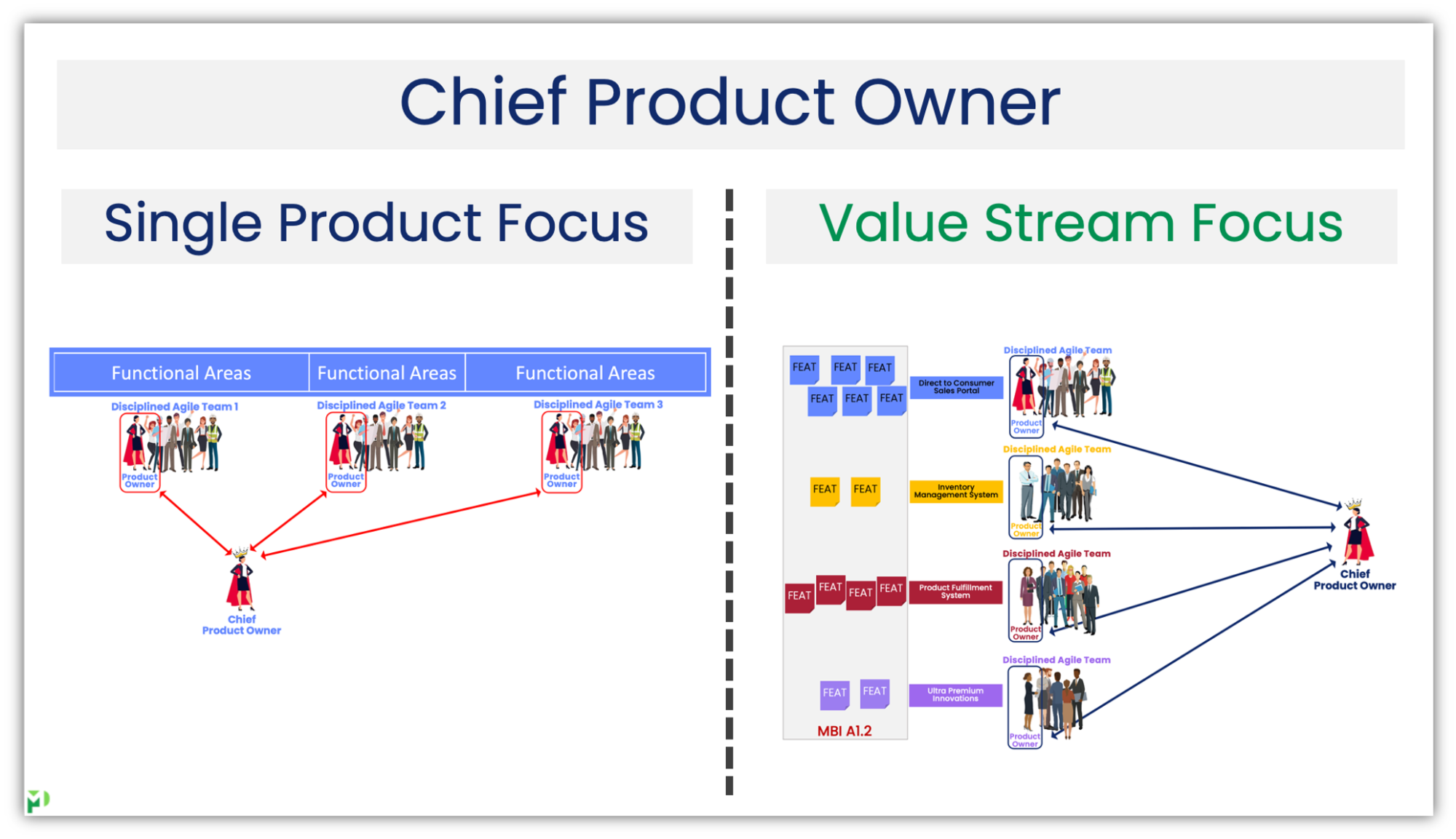
If we move to Disciplined Agile’s strategy for Value Stream Management (VSM), are there any new roles we need to consider? Yes. In addition, existing roles will evolve with new responsibilities and ways to add value.
This article is part 1 of 2 and focuses on evolving existing role structures enabling the Idealized Value Stream. Next week, part 2 of 2 will cover new roles and the evolution of responsibilities of typical existing roles.
Change in Thinking
We need to open our minds to changes we may benefit from in some of agile’s longstanding roles and role structures. So I want to introduce some thoughts on Product Ownership that apply to Architecture Ownership, Team Leads, and Product Management.
Figure 1 represents the overlap of the Product Owner and Product Manager. A visual such as this has been in Disciplined Agile for a long time. It shows the short-term tactical focus of the Product Owner vs. the long-term strategic focus of the Product Manager.
Figure 1: Product Owner vs. Product Manager
Disciplined Agile’s guidance and most other leading agile ways of working focus on a single product. There will be value in this approach; however, as we transition to attending to the value stream, changes in what we have thought about these roles and structures must evolve.
Taking the single product focus further, figure 2 depicts a typical product ownership structure when we have a single product with multiple teams enhancing it.
Figure 2: Single Product Focused Product Ownership
Whether the teams are working in a scaled agile approach with a team of teams (program lifecycle in DA) or working independently coordinating dependencies and impacts, a Chief Product Owner role can add value.
An enabler to delivering value sooner is empowering those who do the work and shifting from group or committee decision-making to individual-based. For example, when there are multiple teams enhancing a product, we can encounter differing decisions by the now multiple Product Owners.
An option is elevating product ownership decisions from multiple people (the three Product Owners) to one person in the Chief role for scenarios when needed. A quote from @Steve Tendon, the creator of #Tameflow, articulates the importance very succinctly “quick decisions by a leader can prevent unnecessary and maybe even deadly drag in the decision process.”
Will this still work with our MBIs and the Idealized Value Stream? In some scenarios, yes. In others, maybe not. Figure 3 shows a very different approach that we need to consider.
Figure 3: Value Stream & MBI Focused Product Ownership
One of the most significant benefits of the MBI is its strategy to identify all of what is needed for value to be realized by a customer. Similar to user stories, Minimum Business Increments vary in complexity, risk, level of effort required for implementation, etc. Not all will be the same.
For the Development Value Stream, an MBI may require enhancing a single product, where another MBI may require enhancements in two or more products for its value to be realized. In the first scenario, based on the size of the MBI, one Disciplined Agile Team may be able to implement the enhancements. However, it may take two or more teams if it is large, and the Chief Product Owner structure in figure 2 may be used.
MBIs that I like to refer to as “complex” have enhancements in two or more products. Figure 3 depicts one of these complex MBI scenarios. For the customer to receive the value of the MBI, four products require enhancing, each with its own Disciplined Agile Team. In this scenario, the sequencing of the work must be balanced for overall flow across all teams and NOT for optimizing the delivery of each team.
Back to the quote of Steve Tendon, we need quick decisions and a product ownership structure that enables it. I encourage you to think about how a Product Owner at the MBI level may support more optimal flow. The Chief Product Owner is a role; if we have one or infrequent MBIs of this complexity, then a Product Owner from the four teams may step into this role for the duration of the MBI. If there is a series of such complex MBIs, this may require someone else to be in it for a more extended period.
We want all teams to be enterprise aware and share collective ownership. However, as we move to improve our value streams and embrace new and, for us, novel approaches, we must have in place structures that enable quick decisions. This Product Ownership structure is an option to enable it.
Figure 4: Single Product vs. Value Stream Focus
Based on our context, we can look at our options and tradeoffs. Figure 4 brings both of these structures to compare and discuss. In addition to Product Ownership, this optional structure applies to Architecture Ownership, Team Lead Ownership, and Product Management Ownership.
For additional information, I did a LinkedIn Live stream on this topic: ATDA Miniseries Ep 7 of 12: Roles in Value Stream Management.

We help implement lean and agile methodologies to streamline processes in a context-sensitive manner.
Quick Links
Latest Posts
All Things Value Delivery Management – Value Flow Factor 1: Small Items
Is the size of work the minimum scope to provide value a customer can consume? In most cases, the answer is no. However, whether it is a project, business case, charter, work package, epic, etc., we can almost always identify a minimum business increment. Relentless...
Project Manager to Value Delivery Manager
Here we have a common problem. The “agile team” comprises a product owner, team coach, and team members. Far too often, I hear something like, “there are no project managers in agile.” Agile teams are empowered to make decisions and determine how to get the work done....




